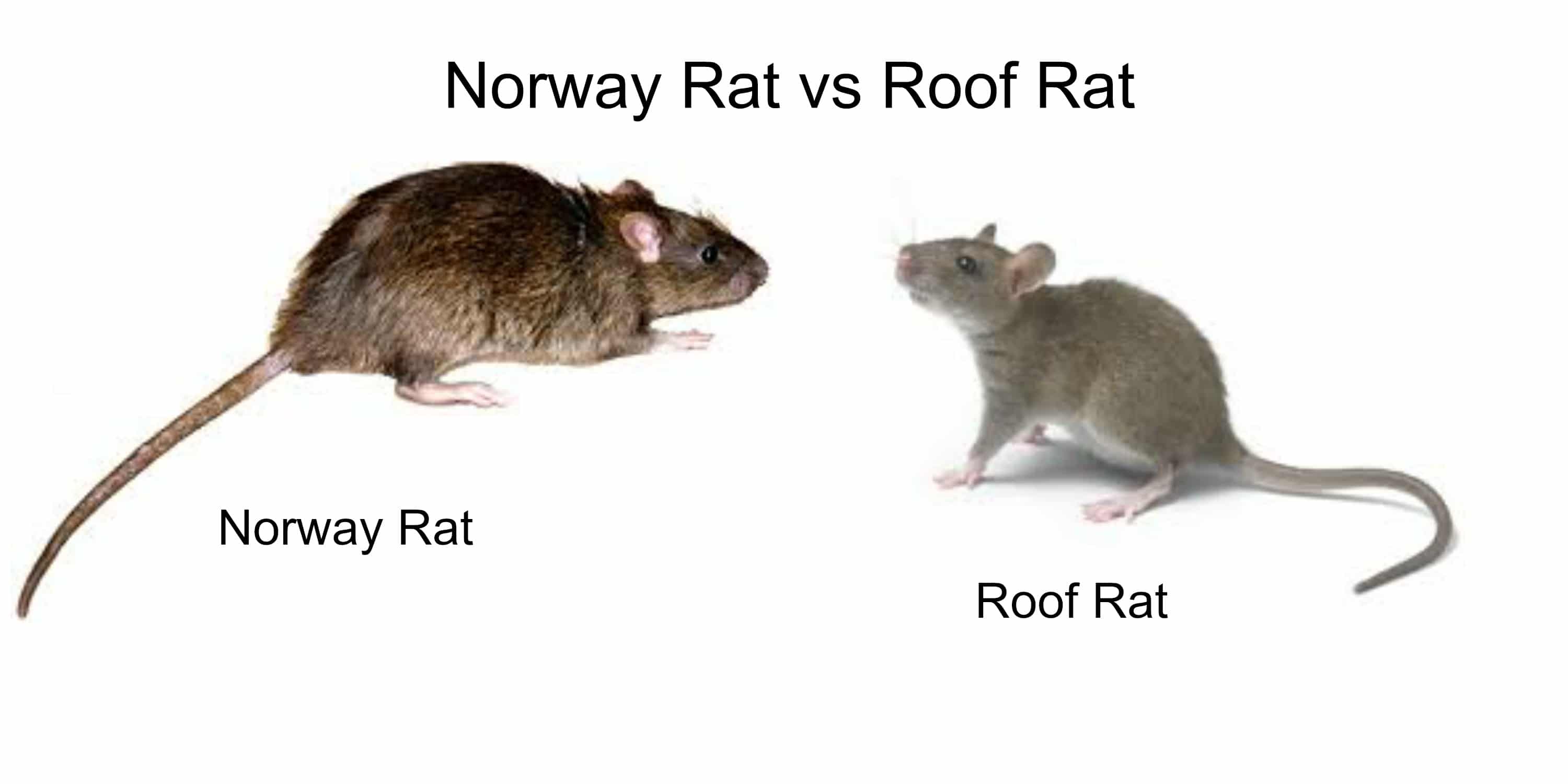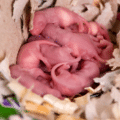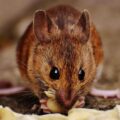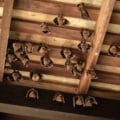Table of Contents
If you have seen a rat scurrying around you might start wondering how many more are present that you didn’t see. It is not always obvious how many rats are in a certain area, a fact that is demonstrated by the constant debate about how many rats live in New York City. That being said, there are some ways to make an estimate of the size of a rat colony.
A typical rats nest will be home to about 5 to 10 rats. There are often many nests in close proximity to each other that form a social colony. The size of a colony can be on the order of 100 rats if sufficient food is present to support the population. Both Norway rats and Roof rats use nests to hide and raise their young.
Where Are Nests Located?
Norway rats like to live on the ground or in the sewers and prefer to burrow or dig long tunnels and chambers beneath things like dirt, leaves, wood, and garbage piles to house and nest their colony. For added security, Norway rats will even dig entry and exit ways to go beneath the concrete foundation on the sides of homes, farms, and office buildings. Their rat nests are about 18 inches down, where female rats will have separate chambers to house their newborn rats and young rats.
Roof rats like to jump and climb high up thick trees, dusty attics, barns, garages, walls, and inside ceilings when building their nest. Yet, they can sometimes be found making their nest at the base of trees in certain fruit or nut orchards. Woodrats are very similar to roof rats and will build multiple nests in trees.
What Are Nests Made Of?
Norway rats will use what they find on the ground such as plant fibers, cloth, string, hair, leaves, twigs, and anything they can chew or carry back. This type of rat can climb like a Roof rat but is slower and less agile.
Roof rats are more athletic and persistent. They will climb or jump where they can and collect what they can, and chew through things like wire, plastic, wood, hair, paper, and even wall insulation to make a nest for themselves and their young.
Some people use strings of yarn or other fabric as bait for rat traps as the rodents will try to take the material to build a warmer nest.
When Do Rats Leave The Nest?
Young rats will leave the nest at the age of about 3 months. This is shortly after they have learned, through imitation from their mother, what foods are good to eat. At 3 months, rats are mature enough to reproduce and travel alone.
All rats are nocturnal and will leave their nest from the start of dusk until dawn. If there is a burgeoning rat problem, you’ll see them scurrying across walls and fences, as well as running along the edges of buildings and floors during the day.
Can young rats cause the same damage as an adult rat?
Young rats haven’t lived as long as adult rats, but they can do a huge amount of damage to your home and property. A rat’s front teeth can grow from 4 ½ to almost 6 inches a year, which means they need to chew to file them down. Overpopulation is an imminent threat caused by rats’ rapid sexual development beginning at 3 months old.
How frequently do rats mate?
Roof rats and Norway rats will frequently mate throughout the year in warm climates. Norway rats can birth from 4 to 6 litters every year that they are alive. They typically can have up to 20 pups over the course of that year. Roof rats can have 3 to 5 litters yearly and can birth up to 40 rat pups per year if there are environmental conditions that will cater to it.
How Will I Know If I’ve Found a Rat Nest?
Holes
You’ll see holes on the ground or above ground level. This can also mean holes you don’t see, that could be leading into your home through a pipe, vent, or other entrance.
Poop and Urine smell
You will smell the overwhelming or even a faint smell of urine-soaked areas and trails the rats leave behind. Rats have no bladder control. You’ll see fecal pellets everywhere rats like to go as they leave it as a trail and a way to communicate with other rats. Check here for reference pictures of rat poop.
Hair and Oil Streaks
You will probably see their hair stuck to things like rough edges of a wood panel, or on the holes, they’ve chewed through. You might even see your own hair or other animal hair in their nests. Rats are dirty and like to crawl, squeeze, and shimmy through grimy and narrow spaces. You’ll see the black or gray oil streaks they’ve left behind on rafters, beams, walls, and poles. These streaks are hormonal markers that can help rats locate their nest, and also help with attracting mates.
Piles of Debris
They like to chew, so you’ll most likely see the remainders of these objects around your property. Rats like to chew and make piles of the things they eat. They will take these piles back to their nests.
Noises
If you can hear active and annoying squeaks and squeals through the night or during the day, you’ve most likely found their nest or where they’ve managed to get themselves stuck. If you’re starting to hear a pattern to their scurries, you’ll be able to follow and trace where their nest is.
Conclusion
Both Roof rats and Norway rats build and live in nests. The key difference is that Roof rats live and nest in high places, while Norway rats live and nest in colonies that are at or below ground level. Both can mate and rapidly multiply, causing overpopulation of rats that can cause a health and safety issue for the people and animals that are surrounded by them. Take action now; one rat can quickly mate and reproduce causing more problems. Do something before it gets out of control.
If you are finding multiple nests on your property then it is time to set out some traps or call an experienced rat exterminator.





